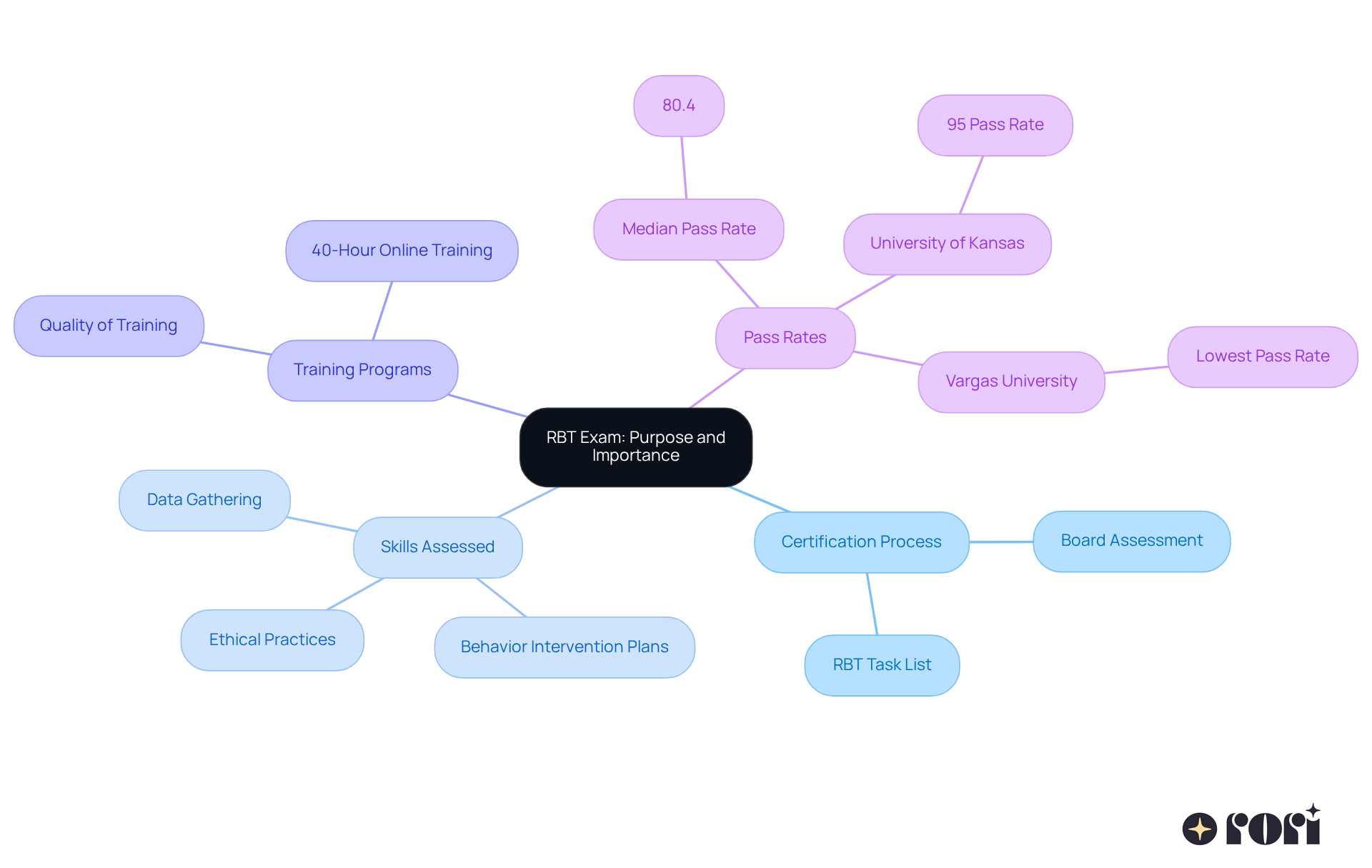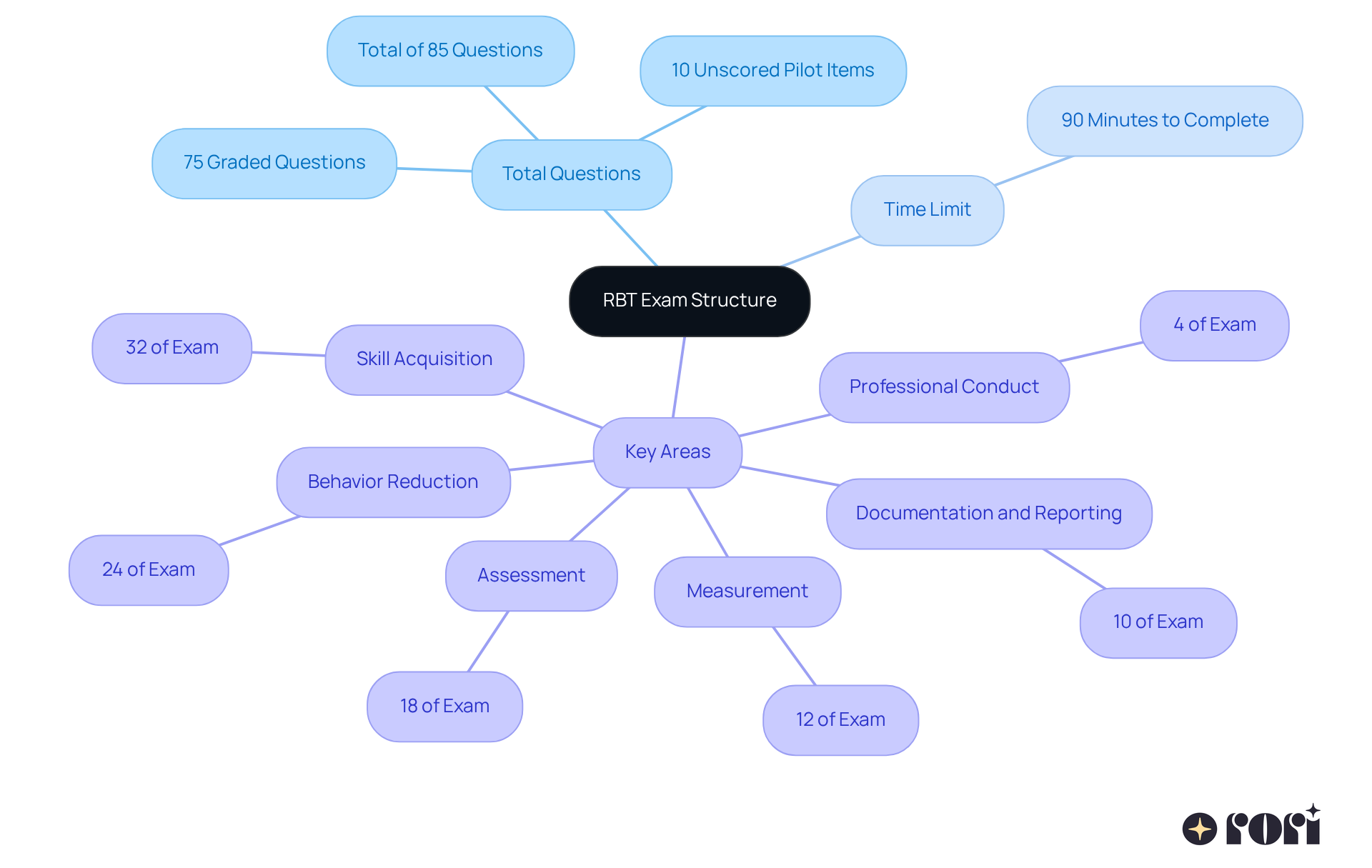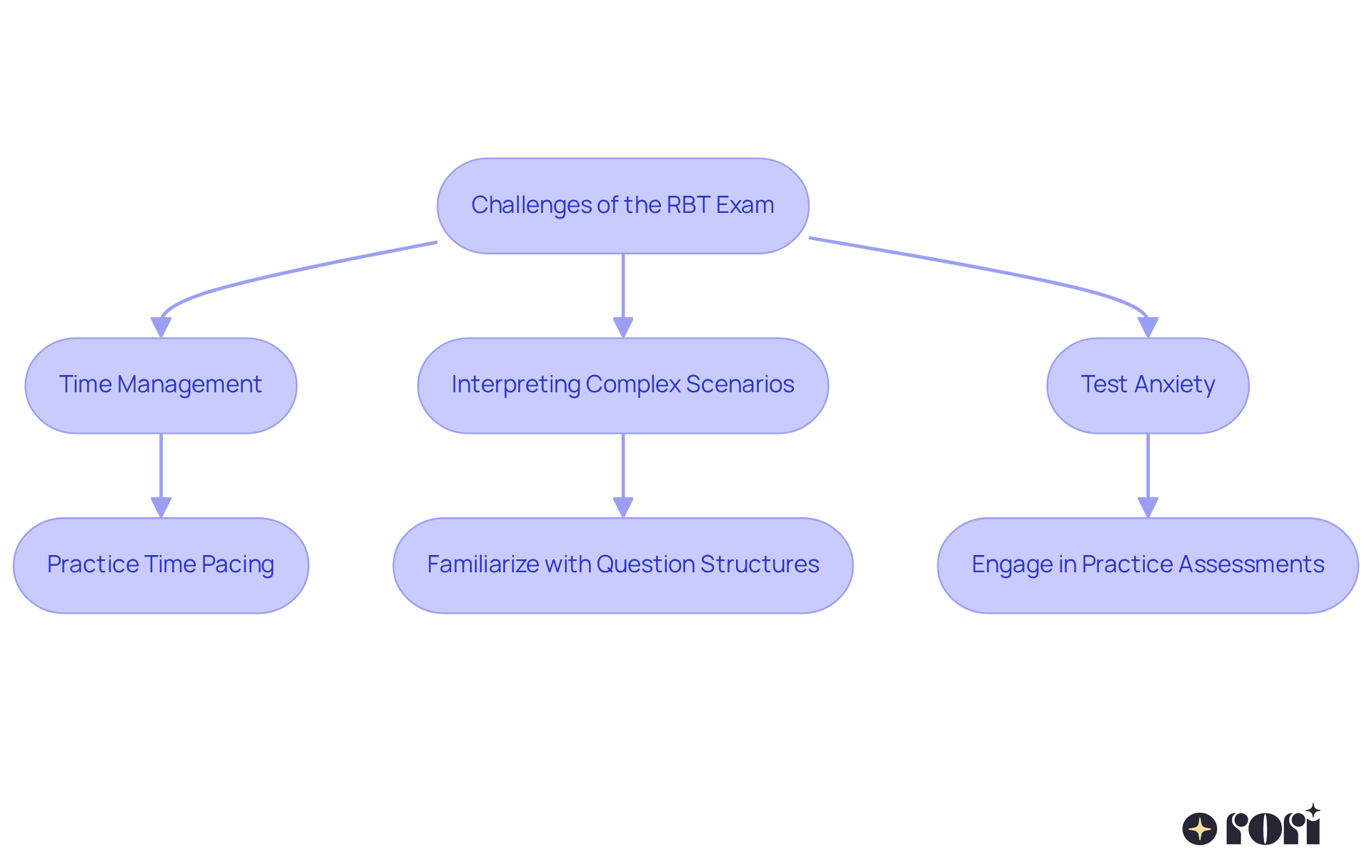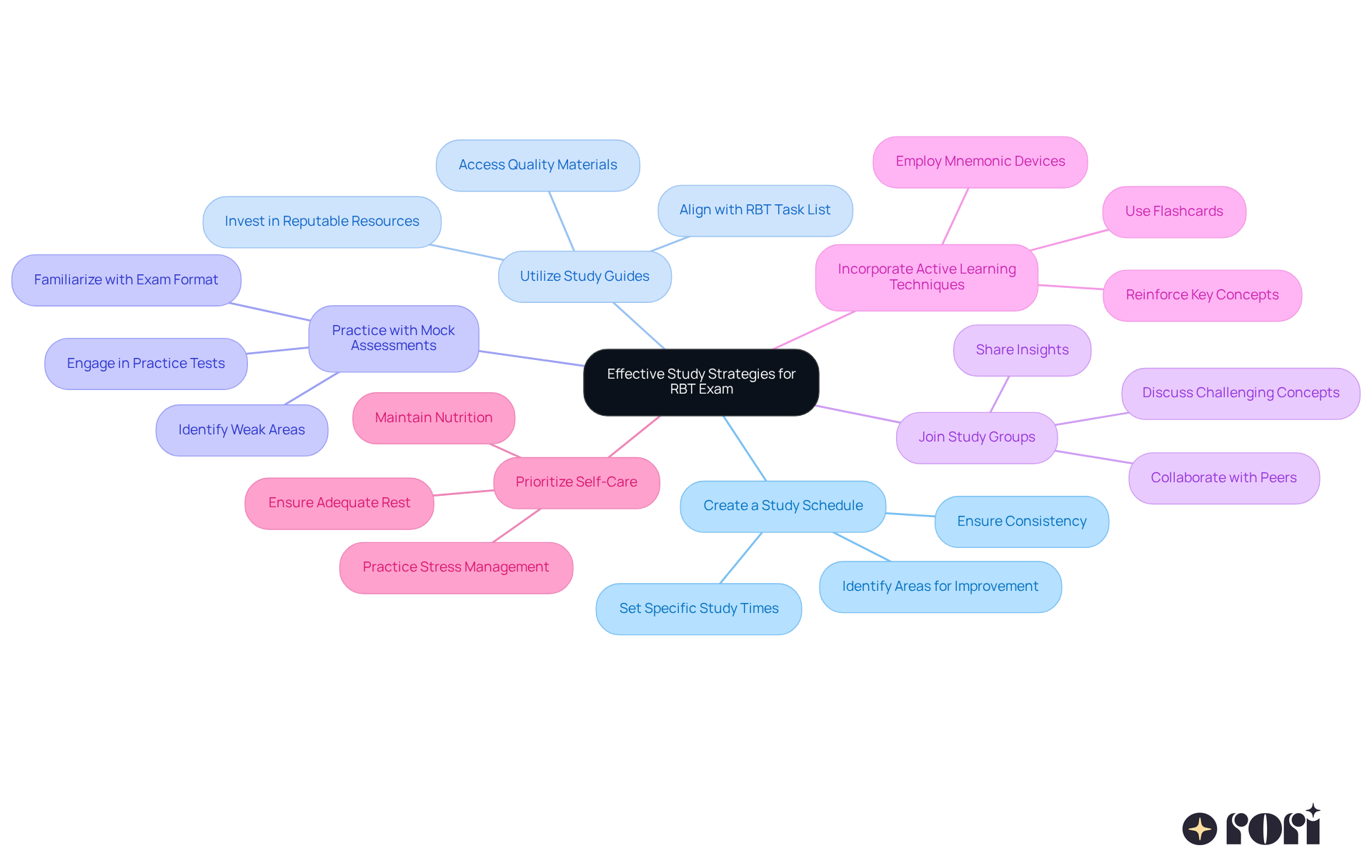The RBT exam can feel a bit daunting, right? With its wide range of topics and the need for solid skills in applied behavior analysis, it’s no wonder that first-time pass rates hover around 70% to 80%. But don’t worry! Effective preparation strategies can really help you tackle these challenges head-on.
Think about structured study plans, practice assessments, and even a little self-care. These are not just tips; they’re essential steps toward achieving your goal of becoming a Registered Behavior Technician. Let’s explore this together and make the journey a bit easier!
Understanding the challenges of the Registered Behavior Technician (RBT) exam is crucial for aspiring professionals in applied behavior analysis. This certification not only validates essential skills for supporting individuals with autism and developmental disorders, but it also significantly impacts the quality of care provided. However, with a median pass rate hovering around 80% and a comprehensive assessment covering diverse topics, candidates often find themselves grappling with test anxiety and complex scenarios.
So, how can one navigate these hurdles and emerge successfully from the RBT exam? Let’s explore this together! We’re here to help you every step of the way!
For anyone looking to dive into the world of applied behavior analysis (ABA), understanding how hard the RBT exam is an important step related to the Registered Behavior Technician (RBT) assessment. This certification ensures that behavior technicians have the essential skills and knowledge to provide effective support to individuals with autism and other developmental disorders. To complete the certification process, candidates need to pass the board assessment, which checks their understanding of the RBT Task List and helps them understand how hard the RBT exam is in determining their readiness to work as qualified Registered Behavior Technicians®.
This assessment covers a range of skills, from ethical practices to data gathering techniques, and even the implementation of behavior intervention plans. Earning your RBT certification not only boosts your professional credibility but also significantly improves the quality of care you can offer clients. For those aspiring to become RBTs, enrolling in a comprehensive 40-hour online training program with practical lessons is a must! 📚
Did you know that the median pass rate for RBT training programs is about 80.4%? This reflects the varying effectiveness of local training initiatives. Plus, individuals who use organized study strategies and different resources tend to succeed more often. For example, the University of Kansas boasts an impressive pass rate of around 95%!
Understanding how hard the RBT exam is can truly inspire candidates to prepare thoroughly, ultimately making them more effective in delivering ABA therapy. Experts agree that RBT certification is crucial for ensuring behavior technicians are well-prepared to meet the needs of individuals with autism, leading to better outcomes in autism care. Let’s explore this together and see how you can make a difference!

The RBT assessment includes 85 multiple-choice questions—75 of which are graded and 10 that serve as unscored pilot items. Candidates have 90 minutes to complete this assessment, which is conveniently offered in a computer-based format. These questions are rooted in the RBT Task List and cover six key areas:
Each question is designed to gauge your understanding of practical applications in behavior analysis. This is especially important for those who have completed the comprehensive 40-hour online RBT training program provided by Rori Care.
This training is packed with practical lessons that address the essential content areas of the assessment, helping aspiring Registered Behavior Technicians (RBTs) gain the skills they need to shine in both the assessment and their future roles. Understanding how hard the RBT exam is, including its structure and the types of questions, is crucial. It allows you to manage your time wisely and approach each section with confidence.
To prepare effectively, it is important to understand how hard the RBT exam is by getting familiar with the test format. Use a variety of study resources and consider participating in practice assessments to boost your knowledge retention and application. Plus, qualified behavior analysts play a vital role in crafting personalized plans with measurable objectives and evidence-based strategies, which can also aid candidates in their preparation for the RBT assessment. Let’s explore this together and make sure you feel ready for the journey ahead!

Many candidates find the RBT assessment to be particularly challenging, which raises the question of how hard is the RBT exam, and it's easy to see why! The broad scope and the understanding required to demonstrate proficiency in the RBT Task List can feel overwhelming. Passing this board assessment is crucial, as it determines readiness to work as a qualified Registered Behavior Technician®. On average, first-time takers often discuss how hard is the RBT exam, as they have a pass rate between 70% and 80%, which highlights the hurdles many encounter.
Some of the key challenges include:
Did you know that research shows a significant number of people struggle with test anxiety? This can really impact performance and lead to lower pass rates. Certain content areas, like ethical considerations and data collection methods, can make you question how hard is the RBT exam.
So, how can you tackle these challenges? One effective way is to engage in practice assessments. This helps you get familiar with the question structure and identify areas where you might need a little extra focus. Aiming for at least 80% on practice tests can really boost your chances of success! Plus, developing solid time management strategies—like pacing yourself during the assessment—can help ease anxiety and improve your overall performance.
By recognizing the difficulties of the assessment and preparing appropriately, perhaps by setting aside 3-6 weeks for preparation, you can enhance your readiness and increase your chances of mastering the RBT Task List. Let’s explore this together and make your journey smoother!

To prepare effectively for the RBT exam, candidates should implement a structured study plan that includes some helpful strategies:
By employing these strategies, candidates can build a solid foundation of knowledge and confidence, significantly improving their chances of success, regardless of how hard the RBT exam is. With the first-time pass rate hovering around 74% in recent years, thorough preparation is crucial for achieving certification. Let’s explore this together!

Understanding the challenges posed by the RBT exam is essential for those aspiring to become Registered Behavior Technicians. This certification not only validates the crucial skills needed for effective support in applied behavior analysis but also boosts your professional credibility. Recognizing the exam's difficulty and preparing accordingly can truly make a difference in your success during this important assessment.
Throughout this article, we've shared key insights about the structure of the RBT exam, the various challenges candidates encounter, and effective study strategies to tackle these hurdles. From managing your time wisely during the assessment to utilizing a structured study plan, each point underscores the significance of thorough preparation. The high pass rates of successful candidates highlight how organized study approaches and practice assessments can really pay off.
Ultimately, the journey toward RBT certification isn't just about passing a test; it's about equipping yourself with the knowledge and skills to make a meaningful impact in the lives of individuals with autism and developmental disorders. By embracing these challenges and using proactive study strategies, you can enhance your readiness and confidence, ensuring you're well-prepared for the RBT exam and your future roles in behavior analysis. So, why not take that first step toward preparation today? It could lead to a fulfilling career tomorrow!
What is the purpose of the RBT exam?
The RBT exam assesses the essential skills and knowledge of behavior technicians to ensure they can provide effective support to individuals with autism and other developmental disorders.
What does the RBT certification process involve?
To obtain RBT certification, candidates must pass a board assessment that evaluates their understanding of the RBT Task List and their readiness to work as qualified Registered Behavior Technicians®.
What topics are covered in the RBT assessment?
The assessment covers a range of skills, including ethical practices, data gathering techniques, and the implementation of behavior intervention plans.
How does earning RBT certification benefit professionals?
Earning RBT certification boosts professional credibility and significantly improves the quality of care that technicians can offer to clients.
What training is necessary to prepare for the RBT exam?
Aspiring RBTs should enroll in a comprehensive 40-hour online training program that includes practical lessons to prepare for the exam.
What is the median pass rate for RBT training programs?
The median pass rate for RBT training programs is approximately 80.4%, although this can vary based on local training effectiveness.
Which institution has a notable pass rate for RBT training?
The University of Kansas has an impressive pass rate of around 95% for its RBT training program.
Why is RBT certification considered crucial in the field of ABA?
RBT certification is vital as it ensures that behavior technicians are well-prepared to meet the needs of individuals with autism, leading to better outcomes in autism care.